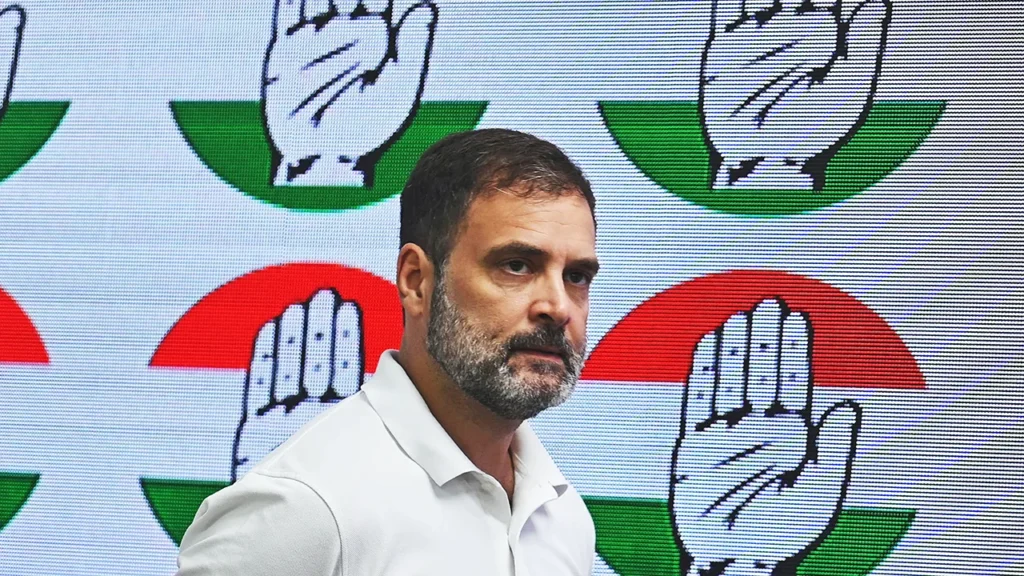India’s political landscape is once again heating up, with the 2024 Lok Sabha elections looming on the horizon. In this charged atmosphere, Rahul Gandhi, the enigmatic leader of the Congress party, has thrown down the gauntlet – a promise of a nationwide caste census if his party comes to power. This audacious move has reignited the age-old debate on caste, representation, and its potential impact on the upcoming polls.
Congress’s Caste Census Pitch
Gandhi’s call for a caste census resonates with concerns over underrepresentation of Other Backward Classes (OBCs), Dalits, and Adivasis (Tribals) in various sectors. He argues that without accurate data on caste demographics, it’s impossible to ensure their rightful share in education, employment, and political representation. He claims that the Modi government’s “one caste, the poor” rhetoric is disingenuous, pointing to Prime Minister Modi’s past identification as an OBC. This calculated move aims to expose the alleged hypocrisy of the ruling party and appeal to the vast and diverse under-represented communities.

Echoes of Bihar’s Survey
The demand for a national caste census gained momentum after the Nitish Kumar government in Bihar published the results of its state-level survey. The data revealed a startling fact – OBCs and Extremely Backward Classes (EBCs) comprised a staggering 63% of Bihar’s population. This finding resonated across the country, highlighting the potential disparities in representation across various castes.
Opposition Unites Behind the Demand
The opposition bloc, including the Congress, has seized upon the Bihar data to amplify their call for a national census. They see it as a critical tool for addressing inequality and ensuring social justice. This united front could potentially challenge the BJP’s narrative and offer a distinct policy plank to woo voters from marginalized communities.
BJP’s Maneuvering Act
In response to the Congress’s offensive, the BJP has adopted a two-pronged approach. Firstly, they have subtly acknowledged the importance of caste balance in political representation. This is evident in the recent composition of their state cabinets in Madhya Pradesh, Rajasthan, and Chhattisgarh, where a conscious effort was made to include individuals from OBC, SC, and ST communities. This tactical move aims to counter the Congress’s narrative and project themselves as equally sensitive to caste concerns.
Secondly, Prime Minister Modi has countered the demand for a caste census by emphasizing his focus on the upliftment of broader categories like the poor, youth, women, and farmers. He claims that addressing the needs of these “four biggest castes” will inherently benefit all, including marginalized communities. This strategy attempts to shift the public discourse away from specific caste-based benefits and towards a more inclusive notion of national development.
The Lok Sabha Test
It remains to be seen whether Gandhi’s caste census gambit will resonate with the electorate in the 2024 elections. His success hinges on effectively translating the data-driven argument into a relatable narrative that addresses the anxieties and aspirations of under-represented communities. Conversely, the BJP’s strategy of focusing on broader economic and social welfare may appeal to voters seeking unity and national progress instead of specific caste-based entitlements.
Beyond the 2024 Poll
The issue of caste census transcends the immediate electoral contest. It raises fundamental questions about social justice, equity, and the future of India’s diverse democracy. Regardless of the outcome of the 2024 elections, the debate on caste and representation is likely to remain a significant factor in shaping Indian politics for years to come.
Further Points to Consider
- The potential impact of the caste census data on existing reservation policies and affirmative action programs.
- The feasibility and cost of conducting a nationwide caste census in a country as vast and complex as India.
- The possibility of the caste data being misused for political or divisive purposes.
- The need for a broader conversation on social mobility, economic empowerment, and dismantling structural inequalities beyond caste alone.
By analysing these questions and delving deeper into the historical context and evolving socio-political landscape, we can gain a more nuanced understanding of Rahul Gandhi’s caste census gambit and its potential consequences for India’s future.